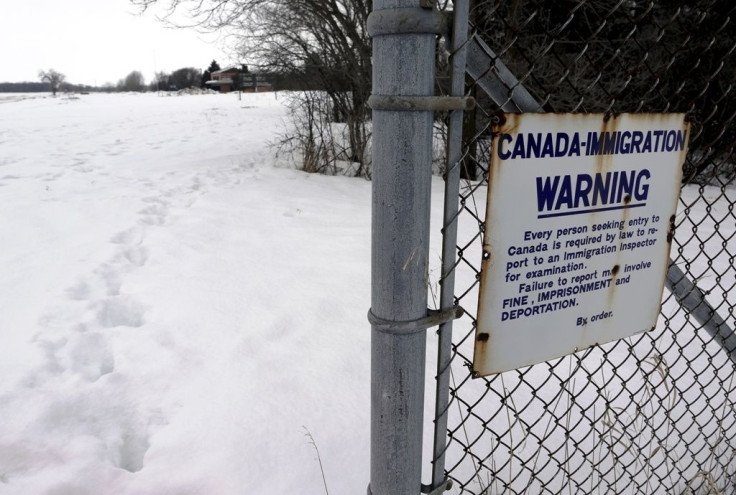Moving To Canada? Refugees Entering Quebec, Manitoba From US Border States Surges

Number of refugees entering Canadian provinces of Quebec and Manitoba through U.S. surged in the last two months compared to the same time last year, according to local reports Monday. Both the provinces border U.S. states of North Dakota, Minnesota, New York, Vermont, New Hampshire and Maine.
Canadian media citing latest statistics from the Canada Border Services Agency, reported that a total of 724 people made refugee claims in February after entering Quebec from the U.S. The numbers last February stood at 99. Moreover, in January, 452 people entered the province to seek refuge — compared to 137 asylum claims last January.
In Manitoba, 143 asylum seekers were intercepted at its Emerson border this January and February — a spike of 109 people from the same period last year.
Not only this, latest figures from Immigration, Refugees and Citizenship Canada showed 2,281 refugee claims were made between Jan.1 and Feb. 21, this year. However, 1,803 asylum claims were made last year for the same time.
The surge in refugees entering Canada comes at a time when U.S. President Donald Trump revised ban on immigration from six Muslim-majority nations — Iran, Syria, Somalia, Sudan, Yemen and Libya. The revised order removed Iraq from the ban list.
Canadian media noted that there has been surge in illegal crossings at the Canada- U.S. border. However, Manitoba and Quebec provinces have witnessed the biggest increase in recent months.
Jean-Pierre Fortin, president of the Customs and Immigration Union, which represents Canada’s border officers, said on March 2 that a special force should be deployed to patrol the parts of Canadian border that are currently not guard in a bid to control the refugee surge.
“We don’t want to sound alarmist,” Fortin said. “But a lot of my people are calling me saying, ‘What’s going on in between? We don’t have a clue.’ ”
Fortin noted that Canada’s border patrol is not equipped to get hold of everyone who enters the country illegally and a 300-person mobile patrol force may help control the refugee flow.
© Copyright IBTimes 2025. All rights reserved.






















